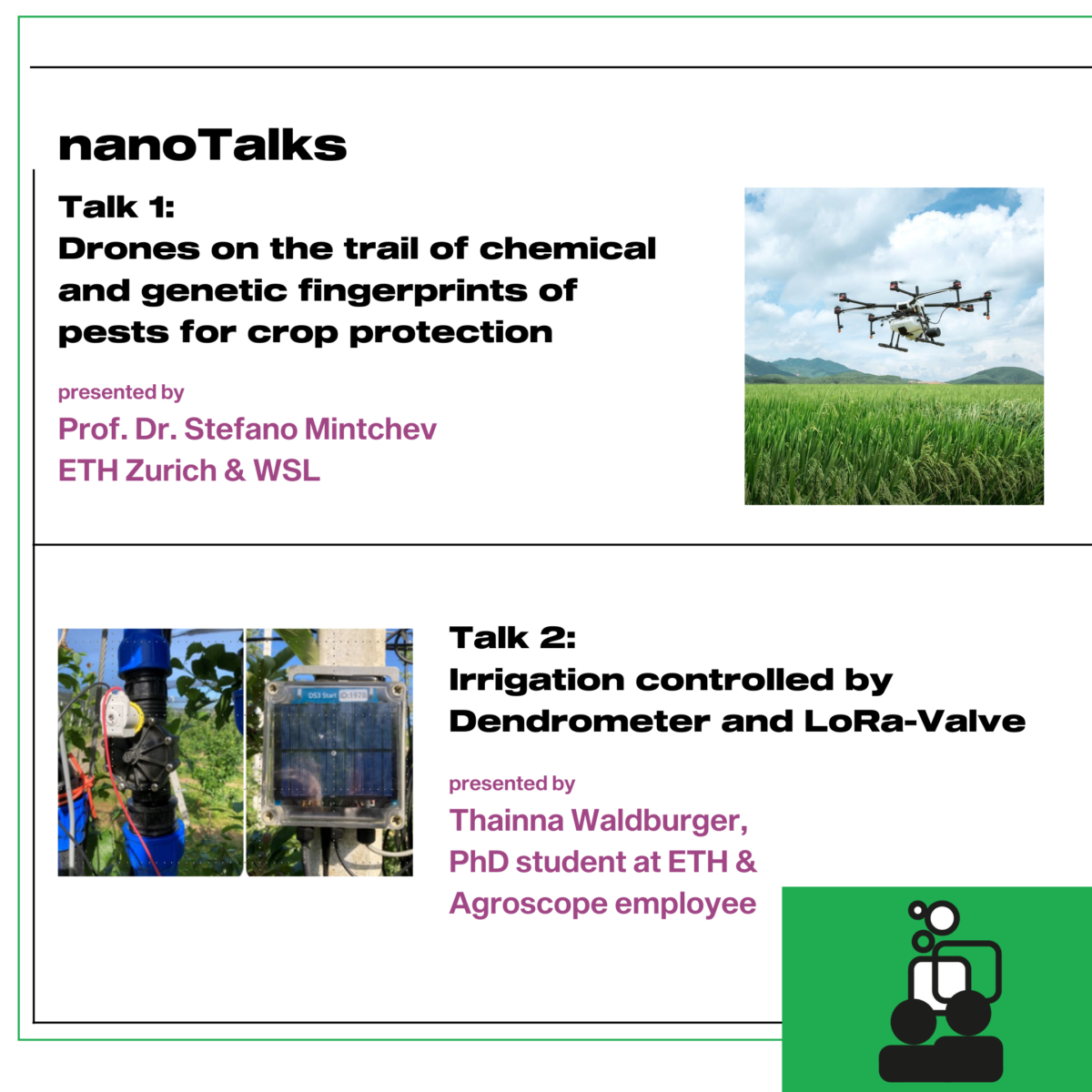
nanoTalks: Technology for agriculture
29.02.2024
University of Zurich - Irchel Campus, Room: Y16-G-05
max. 60, no registration needed

max. 60, no registration needed
Talk 1: Drones on the trail of chemical and genetic fingerprints of pests for crop protection.
Presented by Prof. Dr. Stefano Mintchev, ETH Zurich & WSL
Globalisation and climate change have increased the risk of pest invasions and outbreaks, resulting in crop losses and significant economic damage in Switzerland and worldwide. Effective monitoring methods are urgently needed to identify outbreaks and aid decision-making processes. However, traditional approaches, such as visual inspections, traps and remote sensing, often prove inadequate to detect invasions or outbreaks in the early stages, when intervention strategies are most effective and sustainable. In this nanoTalk, Prof. Stefano Mintchev will explain how aerial robots can enable the collection of plant volatiles, the scents emitted by plants under attack, and environmental DNA, the genetic traces left by pests in the environment, to develop sensitive and effective early warning systems for crop protection.
Talk 2: Irrigation controlled by Dendrometer and LoRa-Valve
Presented by Thainna Waldburger, Environmental engineer, PhD student at ETH and Agroscope employee in the Digital Production group.
Antibiotic resistance is a growing threat to global health, and our antibiotic arsenal against multi-drug-resistant (MDR) bacteria has been defused immensely over the last 30 years. Polymyxins, a member of last-resort antibiotics, are still effective against these MDR pathogens. Although it has been in clinics since the late 1940s, the mechanistic details of polymyxin's action on the bacterial membrane were unclear.
In this NanoTalk, I will discuss the recent findings from a particular imaging technique we used to study the action mechanism of polymyxins. Our results demonstrated that polymyxins bind to membrane lipids, and these newly formed crystalline structures weaken the membrane until it bursts.